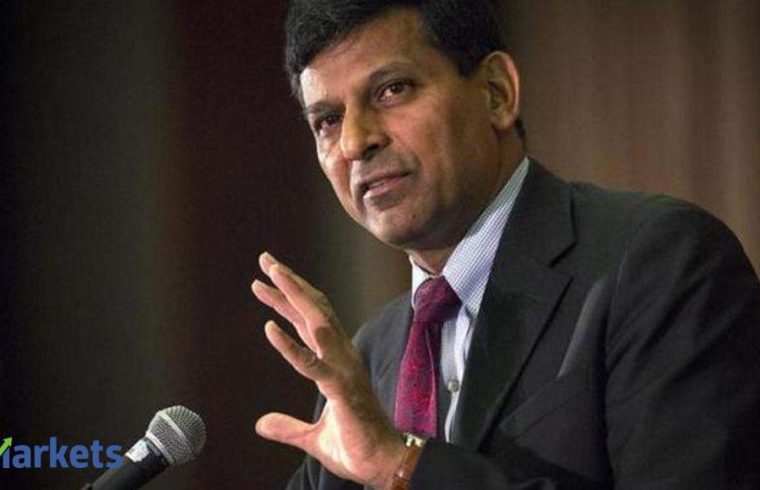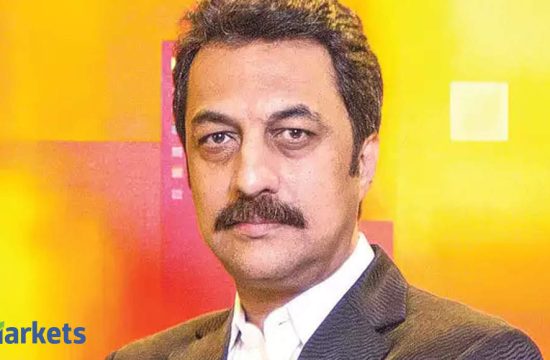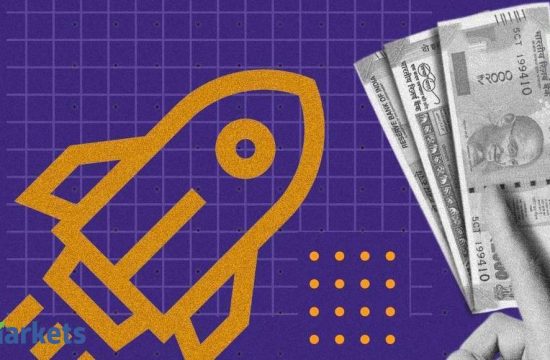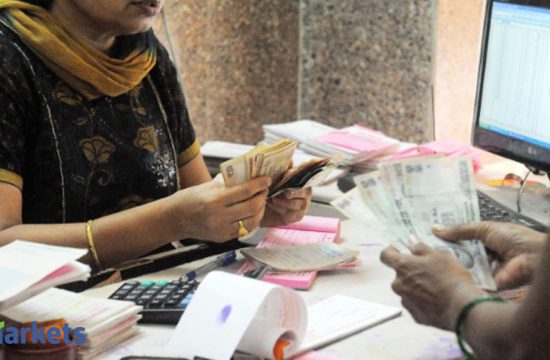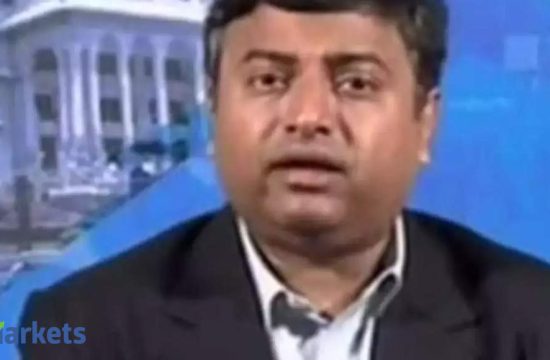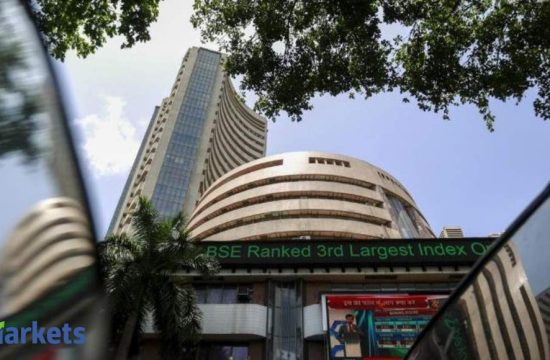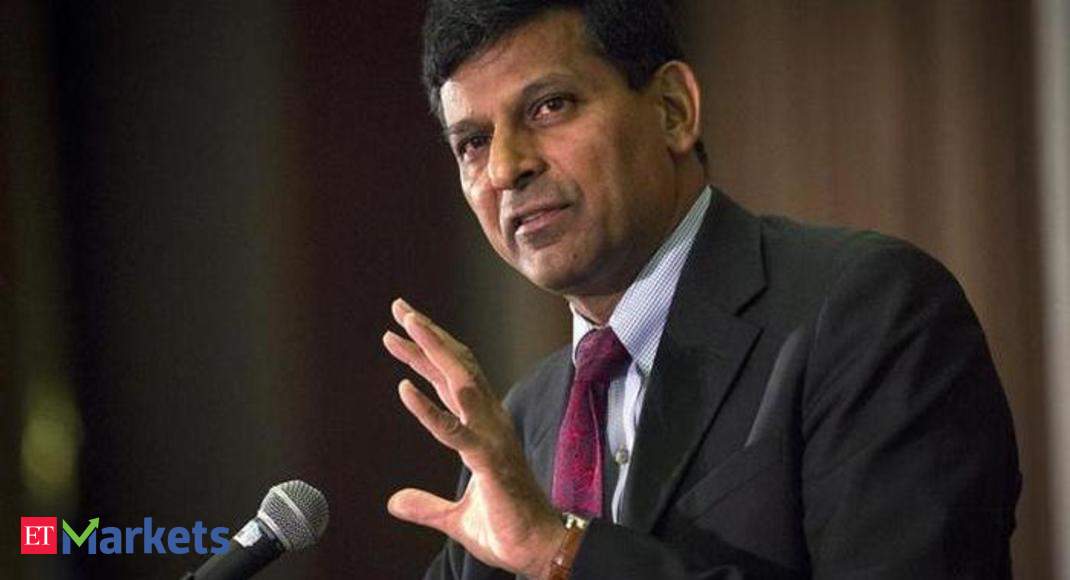
In a post earlier this month, you described the COVID -19 crisis as the worst economic emergency for India since independence but public policy decisions are all about tradeoffs. In the present context between saving lives and saving livelihoods, as someone who has been closely involved with public policy decisions during your stint first as chief economic advisor and then as governor of Reserve Bank of India, where and how do you think India should draw the line? We have extended the lockdown to the 3rd of May but what after that? Should we open up fully or continue with a phased exit?
Well, obviously people on the ground know far more about the situation than I do but I think it is not a stark choice between saving lives and saving livelihoods, you have to actually do both. You cannot remain in lockdown forever as that would be focussing only on saving lives and in the process, if people do not have livelihoods, you may also impact their lives. We do not have distribution systems that reach everybody in India, especially, the very needy, the very poor; often they are left out of the distribution system.
We have to make a trade-off where we focus on both and try and do a little bit of both at the same time. We have to think about the staggered restarting of the economy, start first with the areas that are the least vulnerable and then move to the areas that are the most vulnerable. But of course, an enormous amount of administration goes into the reopening perhaps even more than fighting the disease.
Are these choices different for developing and developed economies? Do you believe that emerging markets do not have the luxury of large scale spending unlike developed countries or are you with people like Dr Rangarajan who believe that this is not the time really to get obsessed with things like fiscal deficit, the fundamental principle of war finance? According to Dr Rangarajan, nothing should be decided on the principle of finance, would you agree with that assessment?
He is actually very right. He is, of course, one of the doyens of central banking in India, somebody we all look up to and the real point is that what matters is the health of the real economy; no matter what the fiscal deficit numbers are. If you kill the health of the real economy, then there is nothing to go back to.
The first focus should be on protecting the health of the real economy which means protecting the health of people, after all, they are the central sort of source of wealth. It involves protecting social harmony during this time because you want people to believe the government is really looking after them and then, of course, protecting firms and financial institutions to make sure that when the economy starts up again, there is a healthy sort of structure that you can go back to. Yes, you may have to spend, you want to spend as wisely as you can, you want to prioritise because there are some things you can do and some things that are extremely expensive. Yes, it would be nice to do it if you had plenty of resources but you cannot do it so prioritise; the fiscal deficit numbers are going to look ugly whatever you do. The important thing is to convince investors that this is necessary to keep the economy together. They cannot complain about it because this is in their long term interest also. At the same time, also signal that you will go back to fiscal discipline over the medium term. One thing that is very important to say is that India will be different this time; last time around when we expanded the fiscal deficit after the global financial crisis, we took a long time to come back to normalcy and we still are not there which is why we have limited resources at this point. But I think it would be important to signal that we would be reasonably fast after this particular episode but do not constrain us right now when we are protecting the economy.
In situations like this, do you believe that fiscal policy should lead with monetary policy at best lending support instead of which what we are seeing? Most of the heavy lifting is being done by RBI and a relatively feeble response has come so far from the government. How can that fiscal package of less than 1% of GDP compare with global packages not only in the developed world but also in the developing world? What do you think is holding the government back?
Well, one has to be careful about all fiscal packages because some count loans as part of the package and some of them double count stuff that was already in the works and they count that as part of the fiscal package. There is some incentive to do shock and awe with the size of the fiscal package, so taking that into account, the reality is we need to have a priority list which we check off and do what is necessary, and make sure that everybody is fed in India as the first point of action. Make sure that our medical facilities are well equipped with tests and with the equipment that we need to deal with the virus; that our administrative structures are in place to enforce quarantines, to do the tracking and tracing that is necessary but also to ensure that everybody has the basic wherewithal to live through this process — food and shelter. All that is necessary and has to be done and I think that is something the state governments, the central government are trying to do.
I cannot tell you successful they have been but that is important and absolutely necessary at this point in time. Beyond that, the second step is to look at all our vulnerable firms; the small and medium enterprises even some of the large firms and to make sure that they can survive this process and be ready to reopen. The third aspect is to worry about the financial system and make sure the financial system is also working so that it does not freeze up the economy when the time comes. All these three are necessary and if we are not doing it, we should be.
You spoke of shock and awe but there is a view in government circles that India should adopt a calibrated approach and not go in for the kind of big bang rescue. But will spending in rigs and rags serve the purpose or should there be some critical mass in which case what is the quantum of additional spending or size of the fiscal deficit that we can live with, without jeopardising future macroeconomic stability because as you said that is very critical? What would that be — 5%, 6% of GDP?
It is hard to know what is the level, ultimately it depends on whether you can do it without a collapse in the currency and a rapid increase in interest rates. We already see some increase in interest rates, our currency has held up reasonably well compared with some other emerging markets over this period but that is a signal of whether the market is willing to accept your paper and that is important because ultimately somebody has to finance this deficit if we increase the deficit.
The interest rate differential, for example, between government bonds and the policy rate is one indicator of whether the market is increasingly reluctant to accept government paper. What is important really at this time is to figure out your priority list and it turns out when you do the numbers, giving people, especially the needy, adequate means to live through this period is not that expensive at least compared to the larger scheme of things and in terms of the humanitarian benefit, social harmony, and benefits in allowing them to stay at home rather than come out on the streets because they have nothing to eat; all that is well worth the cost.
Thinking about making sure that everyone, whether they have access to the public distribution system or not, is adequately fed and has the basic needs of life and that is a no-brainer. The next issue is the small and medium enterprises and there one of the big problems is they are already on a sticky wicket and they are relatively fragile because of what has been happening in the past and some of them will be unable to survive. What you want to do for the people is you want to ensure targeted transfers to individuals, targeted food to less well off families but also you want to focus on protecting the valuable small and medium enterprises, the ones that have been profitable and will continue to be profitable if they survive this process. So, find different ways of reaching them to the extent you can provide support for them. And, of course, you want to make sure that none of our large viable enterprises fails and therefore making sure that financing reaches them. For example, via the corporate bond market or via the large banks, I think that is also important. You need to look at each part and see how much will it take, how can I make sure they survive and as important how can I make sure they have financing to start up again when we restart the economy. Now to some extent this is work that should be ongoing and it is partly a fiscal effort, partly something which the central bank is doing.
You spoke about the small and medium scale enterprises and they are the most vulnerable part of our economy. Now, the government wants businesses to keep employees on their payroll but is that really feasible for the vast majority of these small businesses? Unless the government steps forward with some kind of support, maybe loans like the US payroll protection loan to industry, would that be feasible in the Indian context?
Again you have to be very careful about structuring the schemes so that they minimise the amount of resources they need as we have seen the US payroll protection program is now funded with something like 700 billion dollars which is approximately 3.5% of GDP and it ran out relatively quickly and it is really something which is going to help these entities for about a couple of months. We do not know what comes next; if the virus reoccurs, something similar will be required in order to have these firms keep their employees and despite that, the US employment is already 25 million new unemployed over the last few weeks. These things can become enormously expensive if you try and keep the companies together over this period.
There may be some reason to do that for certain companies but ideally what you would like to do is keep them in a state of suspended animation with relatively low outflow during this period so that they can be revived when the time comes. Now, that is easier said than done. Does that mean that you layoff your employees? Well in India, we do not have a strong system of unemployment insurance, so you would hope that the companies keep on their employees even perhaps at more moderate wages. But we need to think cleverly through this and find ways to alter the system so that these companies stay together but the cost outflow for the companies is relatively minimised. We have come up with things like moratoria on this and moratoria on that but we also have to be careful that when you say a moratorium on rents, then that somebody receiving the rents have their own problems with cash flows. We need to track this whole system through and make sure that everybody in the system is relatively able to sustain. So this requires a lot of work and I hope this work is ongoing.
Ultimately it all comes down to how do we finance this kind of spending, the government has announced a number of measures to tighten its belt but this is small change compared to the kind of money we need to spend. So, is this a time for unconventional measures perhaps like RBI buying government securities in the primary market essentially monetising the deficit, maybe transfer of more reserves from the RBI’s balance sheet or maybe even a special bond or COVID bond something like South Africa is attempting? What are the kinds of unconventional measures we could possibly adopt without too much long term damage?
Well, anything you adopt during this time has to be seen as temporary and to deal with one of the greatest emergency India has faced, you can be as unconventional as you want but what you would also have to remember is there is no such thing as a free lunch. Ultimately, you can join the balance sheets of the government and the RBI and that is the way to think about this. But when you consolidate the balance sheets, yes, the RBI can finance the government but the RBI has to get financing from somewhere. And this is where people lap too quickly into the idea that the RBI can print money. Well, somebody has to hold the money and today there are about 21 lakh crores outstanding of currency in India but how much more currency is people willing to hold? Presumably maybe a lakh crore more? But that is about all the currency they are willing to hold which means that if RBI is going to finance anything, it has to issue more reserves and somebody has to hold those reserves. Now, banks already have excess reserves, they do not want to hold more reserves without getting some interest for it. Ultimately, what this boils down to is the RBI is going to borrow from the markets and essentially intermediate between the market and the whoever wants financing — whether it is the government, whether it is the private sector, whether it is the public sector. And, of course, the RBI cannot lend directly in some cases because it has no ability to make commercial loans but it can try and coax the banks to lend to those sectors and serve as sort of the intermediary in between. Now, what the US treasury and the Fed have done is in cases where the central bank is taking some credit risk, the US treasury indemnifies the central bank against that so that the US treasury is effectively taking that credit risk. Now, we need to think about things like that if we want the RBI to serve more as an intermediary basically intermediating between a banking system which would not make those loans and finding some way for those loans to go into the areas which are really necessary, whether it is state governments, the central government. The RBI can expand its balance sheet for some time through this process but there are limits to that also.
We have to be careful when we say monetise the deficit or print money as there are limits to doing that and those limits are reached very quickly. What can be done is the RBI expands its balance sheet temporarily and hoards more assets while making sure that it does not do anything it does not understand. It does not make direct loans because it has no ability to make those loans. It does not understand commercial credit risk, what it can do is refinance entities that can make those loans while taking minimal credit risk against them.
The RBI has tried in all fairness. It in fact announced two packages to date to support the economy but frankly neither has moved the needle as far as credit offtake is concerned. Banks remain high risk-averse and continue to park their excess funds with the RBI. You said that RBI cannot lend directly as the Fed can but can it do things like perhaps buying corporate bonds, would that help make the system a little better?
It could but it has to be done in a non-discriminatory way, otherwise, it gets politicised very soon. It cannot buy bonds of A and not of B and so it has to have a pretty clear metric. I will buy all bonds of this particular quality but easier still would be to repo corporate bonds i.e. buy the corporate bonds temporarily off the balance sheets of some of our large insurance companies and pension funds thereby giving them some liquidity to go about and buy something else. Effectively, the RBI is providing funding to those entities. It could similarly do that with the NBFCs, again, maintaining adequate haircut on the bonds that it buys so that it is not exposed to credit risk. What is needed at this point is the banking system is going to be very risk averse, it is not going to be willing to lend. So, some thought of whether the government should expand the guarantees it gives for some of the loans that the banking system makes. For example, I have said that perhaps it could think of guaranteeing loans to entities that made a significant profit last year whether they are small or medium-sized and that would give the government a reason to lend to them because they are paying into the treasury and if they survive they could be expected to do that but it also gives a clean metric. Those are ideas that need to be thought of, need to be implemented soon because the system is hurting and if it is paralysed, it is going to be a real problem even when we open up.
We are already quite late on all this because unlike in 2008 this crisis has originated in the real sector but now there is a fear of it spilling over to the financial sector. We have already seen a large mutual fund wind up six of its debt schemes jolting investors; should RBI come to the rescue of mutual funds like it did in 2008 or should it take the view that mutual funds should live up to their name, their investments are subject to market risk and there is no need for RBI to rescue; can it afford to take that position?
The problem is that in times like this all markets freeze up and if you think central bank’ s essential function is providing liquidity, not taking credit risk. But providing liquidity generally at times like this you have to make money freely available and that means entities which have frozen balance sheets, even though the underlying value is reasonable in normal times, you have to help them unfreeze their balance sheets. I think opening a window again with minimising the credit risk that the RBI takes but willing to repo high-quality assets to almost any registered reasonable financial institution except the very tiny, we are very far from that. We could go further steps along that path and it may be necessary at a time when the financial markets are freezing up. I would think that one of the functions of a central bank at a time when markets are freezing up is to re-liquefy them and that is something the Federal Reserve did last month. There is increasing pressure on central banks around the world to do that and it is an important function of the central bank.
Given the fact that demand pressures are going to be low for quite some time, can we relegate the growth inflation trade-off to history books at least temporarily? Is it time to rethink the inflation targeting regime because the MPC’s present mandate comes in the middle of next year; so should we rethink it at all?
Let me go with your first point, which is that in general during this crisis because of the significant effects on incomes of large parts of the population, the general view which I support is that demand pressures or the demand compression is going to be greater in effect than the effects on supply and so to some extent what we are going to get is disinflationary forces rather than inflationary forces. There would be areas of shortage, there will be areas where vegetable prices may pop up but in general it will depress demand more than it will depress supply and there are academic papers showing that. So given that, you can still stay with an inflation-targeting regime and I do not want to talk specifically about Indian monetary policy but more generally, the inflation targeting regime is not going to be a constraint. And this goes back to my earlier point: Any institutional structures that India has which convince investors that over the medium-term, financial stability, monetary stability, fiscal stability will be maintained and that is something we should emphasise at this point when we are breaking the bounds this year for good reason.
If we break everything, if we break all discipline, then how do we convince investors? How do we convince people that they should trust us to come back straight and narrow because we just broke all the institutions which will bring us to the straight and narrow? So let us keep those institutions, in fact, strengthen our financial institutions such as bringing in a fiscal commission and so on. In the short run, this is a crisis which requires special measures in order to protect the people and the economy and so we are going to do that.
